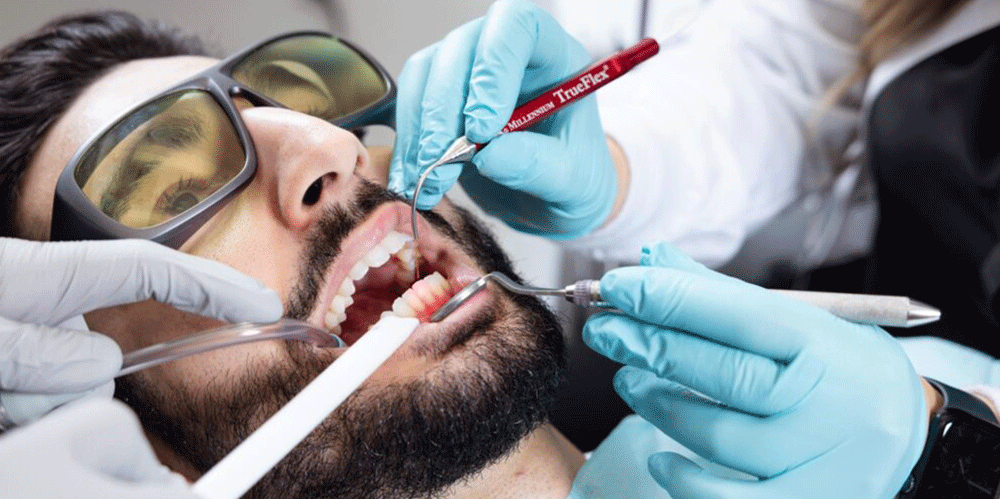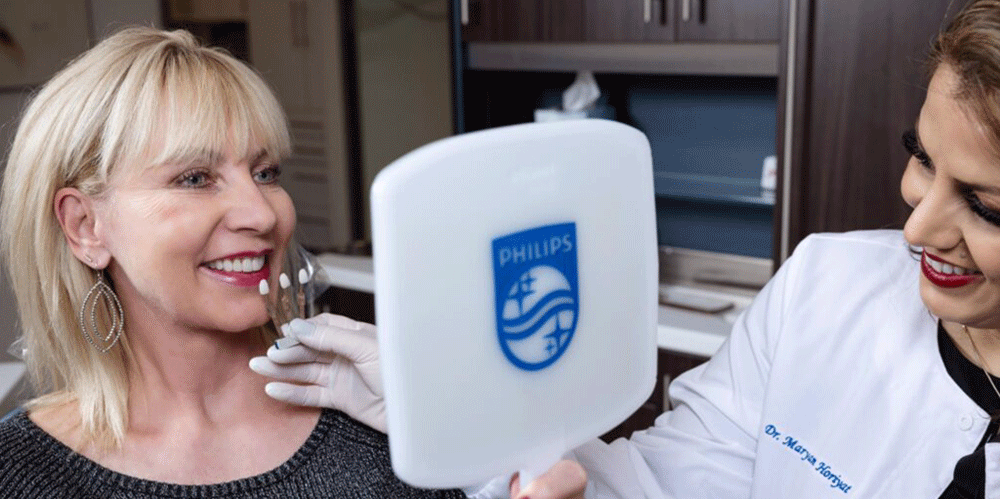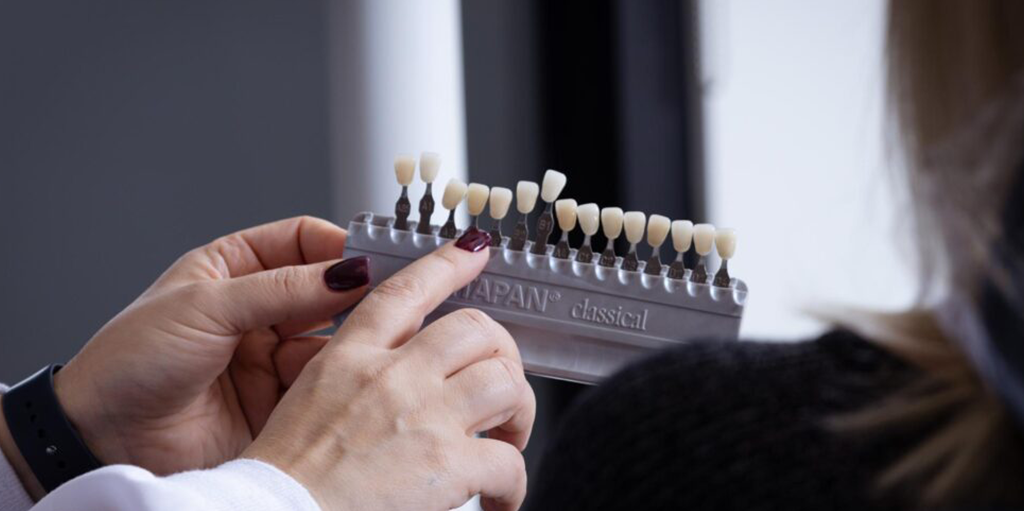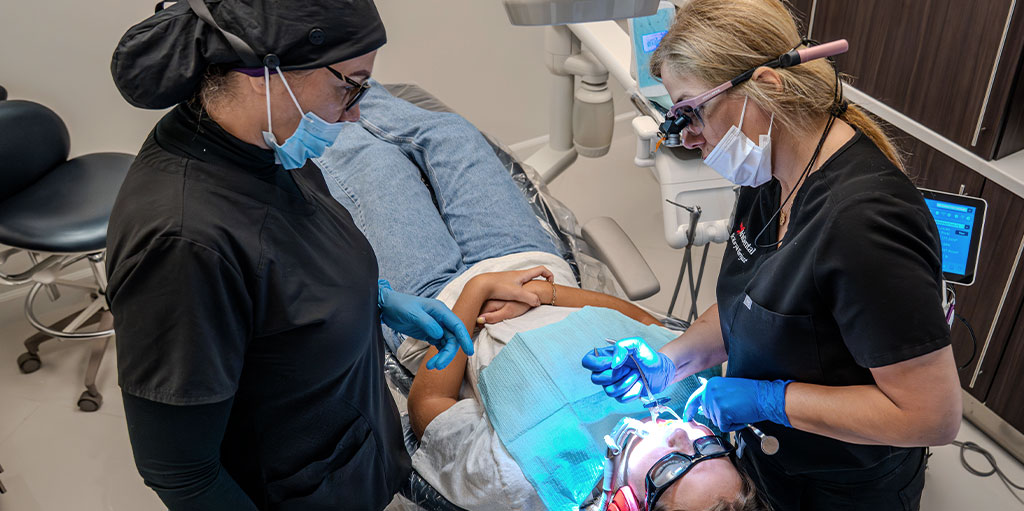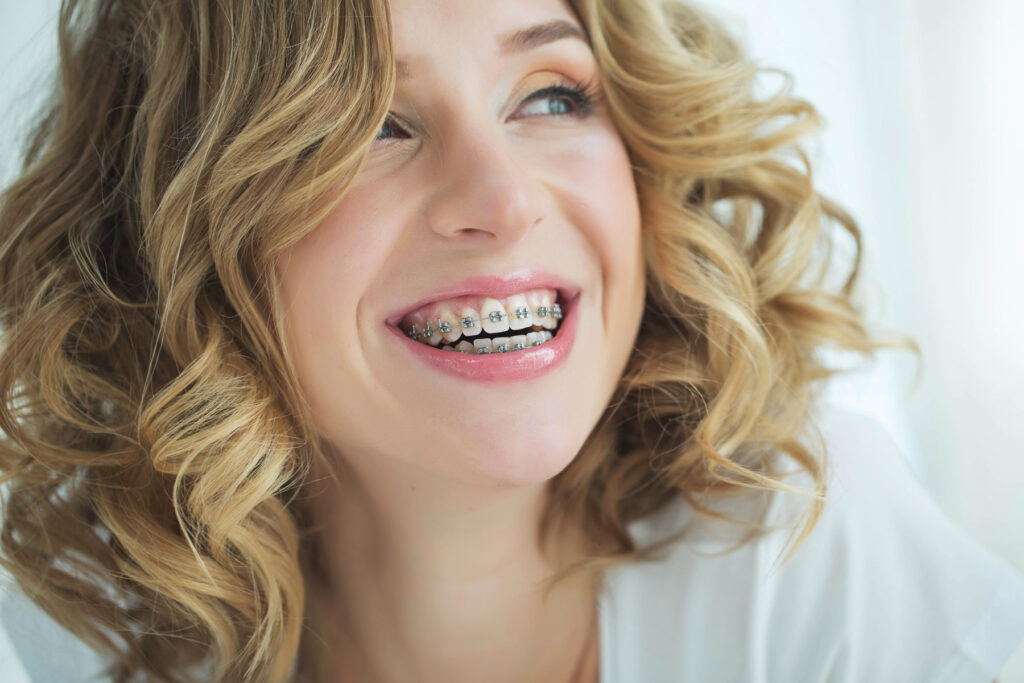A dental implant typically has three components: a fixture, an abutment, and a crown. However, there are also temporary components for the implant that are used during treatment. But did you know that there are also two-piece and one-piece implants? To learn more about the components of dental implants and different types of implants, stay with us until the end of the article.
Dental Implant Fixture
A dental implant fixture or dental implant post is a metal screw, around 18mm long, that is placed inside the jaw during the first stage of implant placement and acts as the root of the tooth. That is why it is conical in shape, just like the root of a real tooth.
When a natural tooth is lost, the bone tissue that originally supported the tooth root is no longer needed. As a result, this tissue begins to be reabsorbed by the body. This causes the jawbone to change shape and facial structure over time. In fact, during the first 6-12 months, approximately 30% of the hard and soft tissues that make up the jawbone are reduced.
After the first part of the components of dental implant is placed, since the bone tissue now has a function to perform (supporting the root of the artificial tooth), it is no longer reabsorbed by the body, and bone resorption stops. Then it takes approximately 4 to 6 months for the base to fuse with the jaw and for the gums to heal. Now the second implant component can be installed.
What is the material of the Dental implant fixture?
The implant base is usually made of titanium, because titanium is a biocompatible metal that bonds well with the jawbone. However, in recent years, the zirconia implant base, which is metal-free and more easily bonds with the jawbone, has attracted a lot of attention. In addition to being more compatible with the human body, zirconia’s color is similar to our teeth color and looks beautiful and natural in patients with thin gums or a narrower jawbone. Another reason why zirconia is popular is that it does not cause allergies. Metals, on the other hand, may cause allergies in some people and disrupt the treatment process.
Dental Implant Abutment
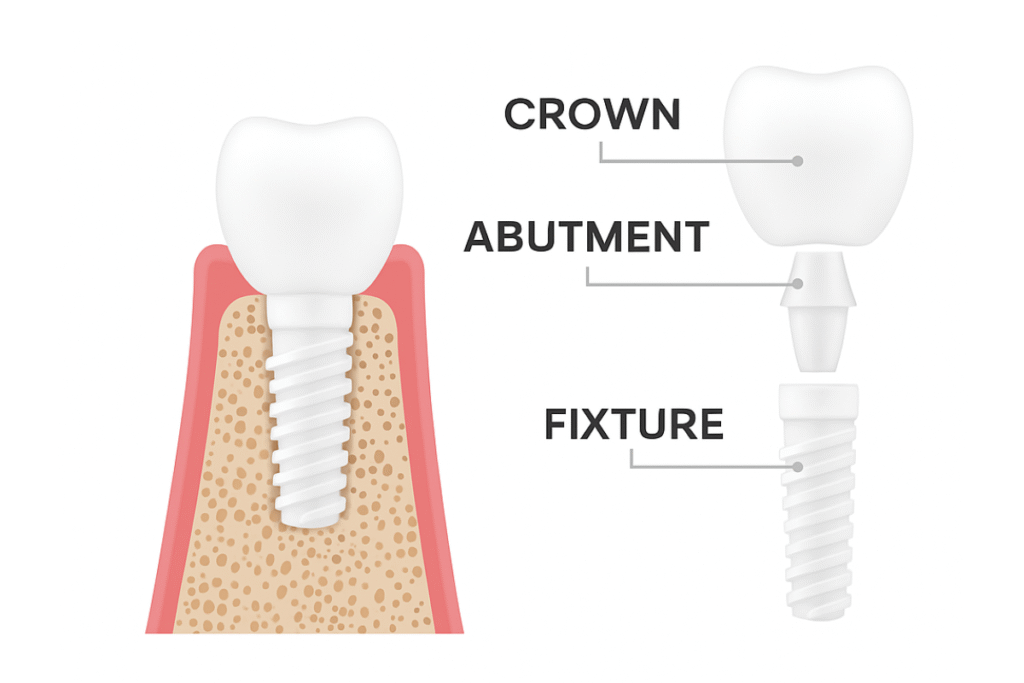
A dental implant abutment is a titanium or ceramic piece that sits on top of an implant post and connects the fixture to the dental crown, meaning one side is recessed into the implant post and the other is bonded to the crown or denture. To place the abutment, your dentist will open the gum again, expose the top of the dental implant, and bond the abutment. The abutment may be placed at the same time as the implant post or may be attached to the fixture after osseointegration has occurred, but it is usually attached after a few months to give the fixture enough time to heal and fuse with the jaw.
Abutments come in a variety of shapes and sizes, depending on the type of implant post and the type of dental restoration it needs to support. Therefore, an abutment may look like a short screw or, in cases where it is used to support an implant-supported dental bridge, have multiple connections. In any case, the main purpose of the abutment is to provide a connection and stability to the implant base to a natural tooth-like crown or restoration.
Dental Implant Restoration
Of all the components of dental implant, only the dental implant restoration is visible. This piece, which simulates the appearance and function of a natural tooth, can be a crown, bridge, implant-supported prosthesis, or denture. The Restoration is made of various materials, such as porcelain or ceramic, and can be screwed into place or glued onto an abutment. The crowns used for implants are much stronger and more stable than conventional dentures that are placed on the gums.
If properly maintained, you can keep your dental implant for years, even for the rest of your life. If the Restoration piece needs any maintenance or repair, your dentist can remove it. On the other hand, an implant denture is removable like conventional dentures and must always be removed from the mouth for cleaning.
Abutment Screw
The three main components of dental implant are the fixture, abutment, and restoration. However, an implant may also have other parts that are used temporarily or permanently. The abutment screw is a small screw that is screwed into the implant and securely attaches the abutment to it. This screw makes the implant more stable and more resistant to chewing pressure.
Healing Abutment
You may know the healing abutment as a healing cap. It is one of the temporary components of dental implants. This small piece is actually responsible for guiding the healing of the soft and hard tissues around the dental implant. After the implant is placed in the jawbone, the healing abutment is attached to the top of it, guiding the gum tissue to heal in a way that will easily accommodate the final denture. But that’s not the only use of this piece. The healing abutment protects the implant from plaque and food debris during the healing process.
Cover Screw
Another component of a dental implant is a cover screw. After the fixture is installed, it must remain in your jaw for three months so that the jawbone covers it well. At this time, a piece must be installed on the fixture so that the holes in the implant do not fill with gums and soft tissue, blood, and waste. This piece, called a cover screw, is essentially a temporary covering. This piece is made of titanium or zirconia and does not protrude from the gum line, and is not visible.
Two-piece Designed Implants
Not all implants are three-piece. In some implants, the implant body and abutment are connected to each other, resulting in two main parts. This is usually used in mini implants and may be slightly less expensive due to the fewer parts. This type of implant can also be customized, and the angle of the abutment can be customized to the patient’s needs. You should consult with your dentist to see which type of implant is best for you.
How long does the implant process take?
Typically, dental implants are performed in about five sessions, which include: 1. Consultation and presentation of the treatment plan, 2. Implant surgery and placement of the implant base, 3. Implant healing, 4. Impression, and 5. Implant crown installation.
If your jawbone has been depleted, the bone grafting process will also be added to these. All of these will take between two and six months, and the length of treatment will depend on the type of implant, the person’s physical health, the condition of the jawbone, and additional treatments, and it can be slightly longer or shorter.
Dental Implant Components
Knowing the components of dental implant helps us to understand the treatment process better. This may reduce some of the common anxieties in patients and make the treatment process easier. The way in which the dental implant components are installed depends largely on the skill and expertise of the oral surgeon. If you are looking for a professional dental clinic, Aria Dental Clinic provides you with the best treatment with the most professional dentists and the most modern methods.




